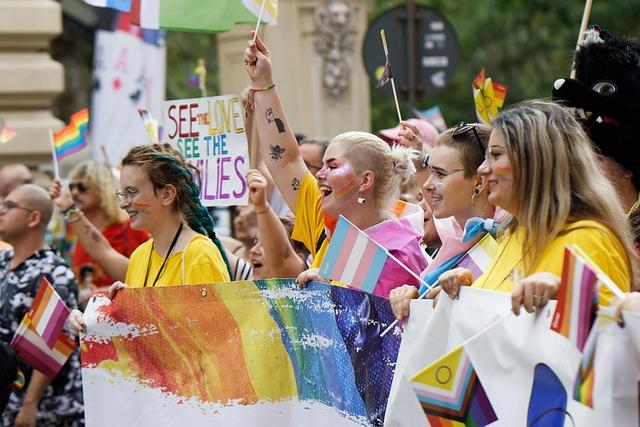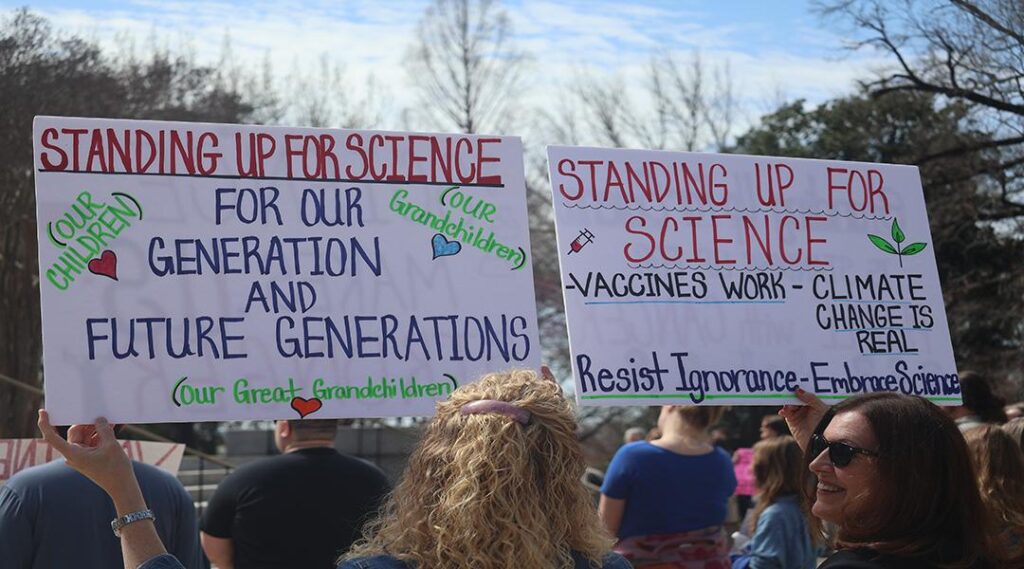In a world increasingly shaped by advancements in science and technology, the phrase “Stand Up for Science” resonates now more than ever. It represents a call to action, urging individuals, institutions, and governments to prioritize scientific integrity, innovation, and education. Yet, as we navigate an era marked by misinformation and skepticism, the imperative for this movement to evolve and sustain momentum becomes crucial. In the latest discourse highlighted by Scientific American, the importance of translating passion into concrete action emerges as a central theme. This article explores the necessary steps for the “Stand Up for Science” movement to not only maintain its relevance but also to effect real change in the public’s perception of science. By examining the fundamental challenges and opportunities that lie ahead, we can better understand what it truly means to advocate for science in today’s complex landscape.
Embracing Evidence-Based Advocacy in the Face of Skepticism
In a world where skepticism often casts a long shadow over scientific conclusions, the importance of evidence-based advocacy becomes even more pronounced. Engaging with the public requires more than just presenting data; it necessitates crafting narratives that resonate emotionally while grounded in sound research. This dual approach helps bridge the gap between complex scientific concepts and everyday understanding.
To effectively promote scientific understanding, advocates should focus on a few key strategies:
- Engagement: Foster open dialogues that allow for questions and discussions, ensuring that the community feels heard.
- Education: Develop materials that translate complex data into accessible formats, such as infographics and videos.
- Partnerships: Collaborate with influencers in various fields who can help amplify scientific messages to wider audiences.
Furthermore, quantifying the impact of advocacy efforts is crucial. Using careful metrics to evaluate what works and what doesn’t can guide future initiatives. The following table highlights some effective outreach methods alongside their potential benefits:
| Outreach Method | Potential Benefits |
|---|---|
| Public Workshops | Foster community trust and understanding |
| Social Media Campaigns | Expand reach and engagement |
| Joint Research Projects | Enhance credibility and collaborative understanding |
Engaging Diverse Communities to Foster Scientific Literacy
To cultivate a culture of scientific literacy, it is essential to engage various communities in their own contexts. Effective outreach tailored to the unique needs of different groups can bridge the gap between complex scientific concepts and everyday experiences. By leveraging local knowledge and cultural values, we can facilitate a deeper understanding of scientific principles while also respecting and integrating traditional forms of wisdom.
Collaborative initiatives between scientists, educators, and community leaders can ignite interest and excitement for science. Utilizing various platforms, such as:
- Community workshops and seminars
- Interactive science festivals
- Digital storytelling and social media campaigns
These activities not only promote scientific knowledge but also empower community members to discuss and advocate for science in their own right. When individuals see how science intersects with their everyday lives, they can better appreciate its importance.
Moreover, creating inclusive educational resources is pivotal in reaching underrepresented populations. An effective strategy involves conducting needs assessments to identify gaps and tailoring resources accordingly. Here’s a simple overview of potential strategies:
| Strategy | Description |
|---|---|
| Tailored Workshops | Design workshops reflecting community interests and concerns. |
| Diverse Language Materials | Offer resources in multiple languages for accessibility. |
| Partnerships with Local Organizations | Collaborate with local groups to enhance credibility and reach. |
By actively involving diverse communities in these ways, we cultivate a more informed society that values scientific inquiry and critical thinking. Ultimately, the journey toward enhancing scientific literacy begins with our willingness to acknowledge and celebrate the unique experiences and contributions of every community.
Strengthening Collaboration Between Scientists and Policymakers
The relationship between scientists and policymakers is critical in addressing some of society’s most pressing challenges. By fostering an environment of mutual respect and understanding, both fields can work together to develop innovative solutions. Collaboration can be strengthened through:
- Regular Communication: Establishing frequent dialogue allows for the exchange of ideas and research findings, ensuring that scientific advancements are integrated into the policymaking process.
- Joint Workshops and Conferences: Hosting events where scientists and policymakers can share insights, challenges, and successes fosters community and builds trust.
- Creating Interdisciplinary Teams: Encouraging mixed teams composed of both scientists and policy analysts can lead to a more well-rounded approach to problem-solving.
To facilitate these interactions, we must also address the barriers that traditionally exist between the two domains. For instance, scientists often work in specialized arenas that may not align with the immediate concerns of policymakers. Addressing this disconnect requires:
| Barriers | Strategies to Overcome |
|---|---|
| Communication Gaps | Establish regular briefings and updates to inform policymakers of scientific developments. |
| Differing Timelines | Align research projects with legislative calendars to ensure timely input from scientists. |
| Resource Limitations | Provide funding for joint initiatives that bring both sectors together. |
Ultimately, the success of collaborative efforts lies in the recognition that science shouldn’t exist in a bubble. By viewing themselves as part of a larger societal framework, scientists and policymakers can harness the power of their combined expertise to enact meaningful change. This partnership is not just beneficial but essential, as informed decisions pave the way for sustainable practices and progress in various fields ranging from healthcare to environmental policy.
Ensuring Sustainable Momentum for Science-Driven Initiatives
To maintain the momentum behind science-driven initiatives, it’s crucial for advocates and stakeholders alike to engage in a rich dialogue that fosters collaboration and innovation. This approach requires a commitment to establishing partnerships across diverse sectors, including academia, industry, and government. By leveraging the expertise and resources of various stakeholders, we can enhance the impact of scientific endeavors and ensure that they resonate on a broad scale.
Furthermore, the sustainability of these initiatives hinges on the integration of public outreach and education. When communities are equipped with knowledge about the benefits and implications of scientific advancements, they become active participants in the conversation. This involvement can be cultivated through:
- Interactive workshops
- Community forums
- Online platforms for discussion and feedback
To track and measure the success of these science-driven efforts, it is vital to establish robust metrics that reflect engagement and impact. The following table outlines potential performance indicators that can guide the evaluation of initiatives:
| Metric | Description |
|---|---|
| Community Engagement Rate | Percentage of community members participating in events and discussions. |
| Research Output | Number of publications and presentations resulting from collaborative efforts. |
| Funding Attractiveness | Amount of funding secured through partnerships and initiatives. |
By focusing on continuous improvement and responsiveness to community feedback, we can create a dynamic ecosystem where science thrives, and sustainable practices take root. These efforts will not only advance knowledge but also cultivate a culture that champions science as a cornerstone of societal progress.
Closing Remarks
As we stand at the crossroads of science and society, the call to “Stand Up for Science” beckons us with urgency and resolve. The journey ahead demands more than mere words; it requires action, collaboration, and a commitment to fostering a culture that values empirical truth over conjecture. The movement is not merely a response to adversity but a clarion call for integrity in research, inclusivity in discourse, and transparency in processes.
As we reflect on the implications of this movement, we must remember that the essence of science lies in its relentless pursuit of knowledge—a pursuit that thrives on debate, understanding, and shared experiences. Embracing this ethos means recognizing our individual roles in advocacy and supporting one another in safeguarding the integrity of scientific efforts.
In an age where misinformation can spread like wildfire, the necessity of standing firm in defense of science has never been clearer. Moving forward, let us harness our collective strength and creativity to ensure that the march of science continues, undeterred and unyielding. Together, we can build a future where scientific inquiry flourishes, guiding humanity toward informed choices and a deeper understanding of our world. The fight is far from over; let’s make every step count.
